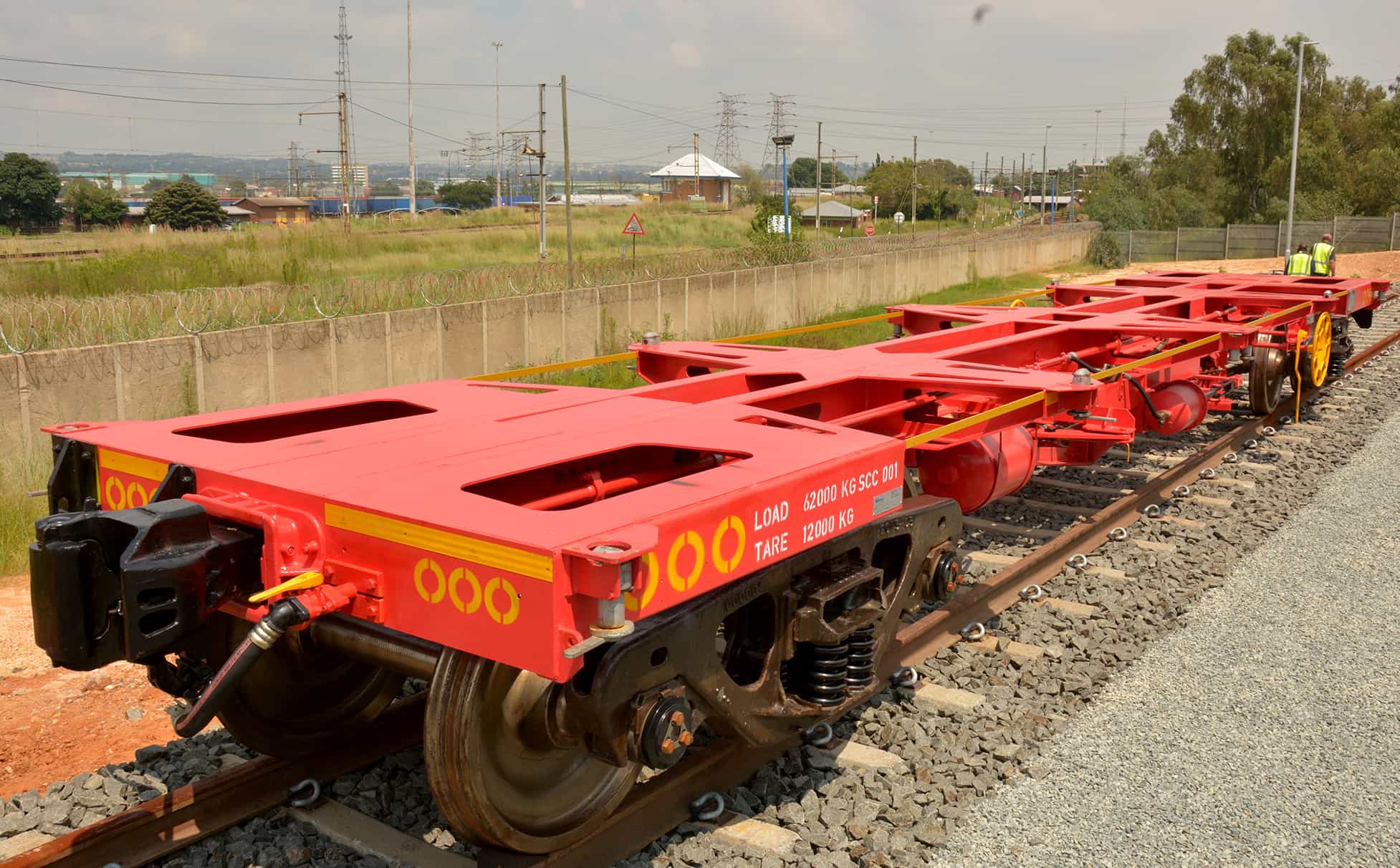When Cecil Rhodes proposed the “Cape to Cairo” railway in 1894, his budget was constrained just as many of our infrastructure projects are today. To reduce cost, his engineers proposed a narrower gauge of track (later called “Cape Gauge”) and as the railway ran further north the sleeper spacings were widened, and the resultant axle load limits decreased.
Whilst this design worked for most of the 1900’s, as the North South Rail Corridor tries to convert freight to an intermodal concept using containers in the 21st century, this legacy axle weight limit restricts payloads significantly.
The 20-tonne axle weight limit in South Africa reduces by a quarter to only 15 tonnes as rail wagons cross the border from northern Zambia into Congo where 65% of inbound and outbound freight is destined within the Copperbelt today. With a standard Transnet (four axle) flatbed container wagon weighing 17.5 tonnes empty, loading in the DRC is restricted to a payload of under 19 tonnes per twenty-foot container after allowing for the mass of the containers themselves. This low freight volume leaves the container ten percent underutilised which negates the economic benefits of containerising the cargo in the first place.
Recognising the problem that trains loaded in the DRC would rarely generate efficient through freight to the Far East, Grindrod Rail Consultancy Services (GRCS) specified the design for a unique and innovative lightweight wagon which would be suitable for deployment on the North South Rail Corridor in early 2015. GRCS proposed that a wagon design with a tare weight of only 12 tonnes would not only be more fuel efficient to run but would also enable seafreight containers to be loaded at origin in Congo with up to 21 tonnes of copper or cobalt and travel all the way to China without re-stuffing.
At a chance meeting in Kitwe in 2015, GRCS were introduced to Galison Engineering, a long established manufacturer of underground railway rolling stock based in Welkom in the Free State. Galison took the design brief and by using innovative Swedish high tensile Domex steel were able to create a skeletal chassis which was both strong enough and light enough to support two fully laden containers and keep the total gross weight of the wagon to 60 tonnes.
GRCS, Galison and Grindrod Pembani Remgro Leasing signed a tripartite agreement to market, manufacture and finance this wagon exclusively in Africa and set about the long process of attaining full AAR and Transnet certification for the design in South Africa. A trial wagon was commissioned and produced in 2016 and successfully completed all Rail Safety Regulator approvals early in 2018 and is now being load tested on the corridor between Beitbridge and Ndola.
This lightweight wagon design has drawn considerable interest from clients and fleet operators around Southern Africa, and GPRL is looking to order up several hundred units for deployment on the North South Rail and Nacala Corridors in the next three years.
This project has been an excellent example of three-way co-operation between distinct companies with diverse skill sets and is another example of how Grindrod Rail through innovation is contributing to the renaissance of the railway network in Central Africa.
Contributor: Mark Reed

